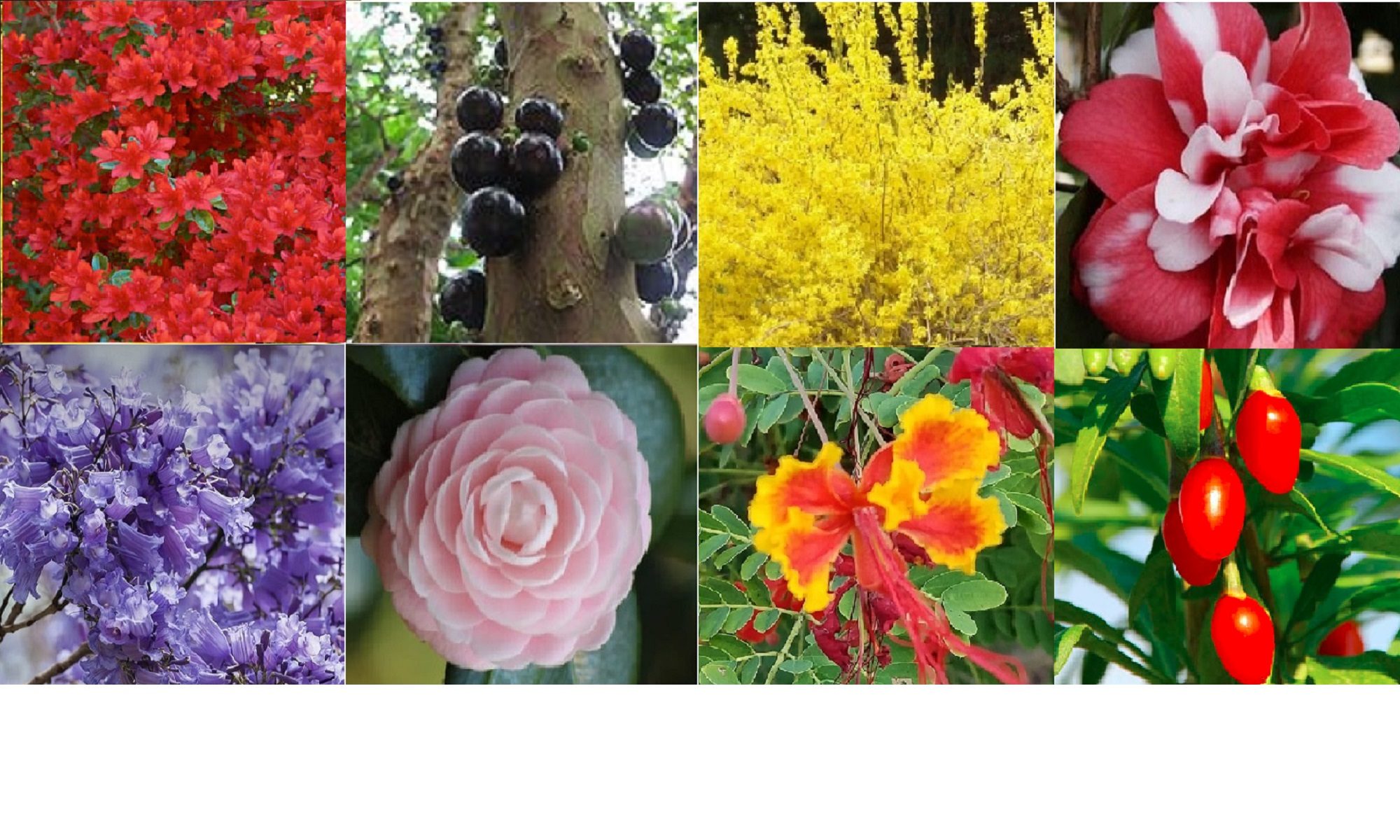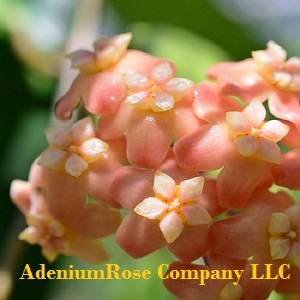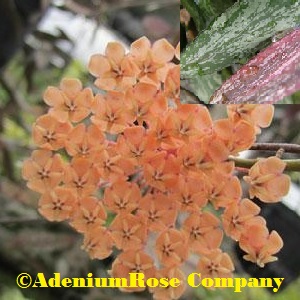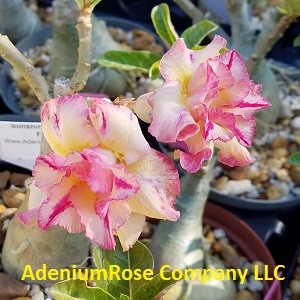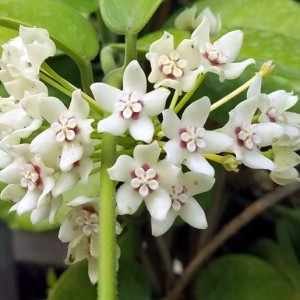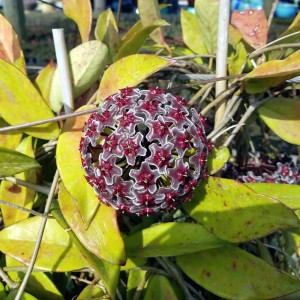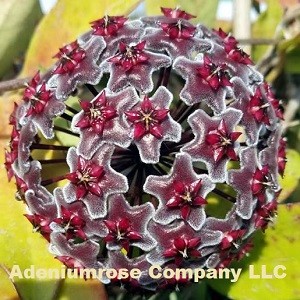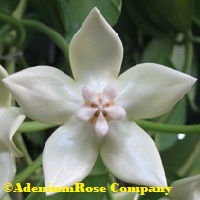Hoya plant propagation success rate will depend on hoya type and method used. Some varieties of hoyas are easy to propagate and others are extremely hard. The basic rule of thumb is that the rarer the plant the harder to propagate.
Thick leaf hoyas are usually the easiest to propagate. However, they are the ones most prone to leaf rot during propagation. Hoyas with leaves that do not store water have less rot issues. We highly suggest that you start with a common hoya type. Publicalyx Red button, carnosa tri-color or publicalyx Splash hoya plant propagation make get ones to learn how to do it.
First, do not expect to propagate from seed what-so-ever. Yes, it can be done but with an extremely high failure rate. Epic Grower does not grow by seed. We propagate 100% from cuttings, rooted cuttings, plant division, or vine “dip in soil” method.
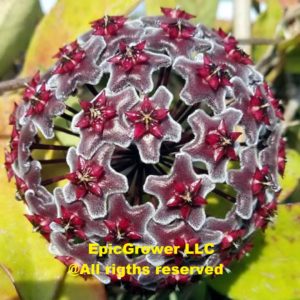 Hoya Plant Propagation – Long Vines
Hoya Plant Propagation – Long Vines
If the variety of hoya plant you plan to propagate has bendable long vines then use the soil dip method. This method will give you a very high successful.
As your hoya vine get longer, dip (create a u-shape) at the center of the vine. Put the u-shaped section in the soil about 1/2″ deep. Epic Grower recommends that you leave 3.4 nodes before the u-shaped section you dip in the soil. New branches grow at the nodes. Do not cut the VINE at this point.
You do not need rooting hormone for this method. You may need to weigh down the vine with a rock to keep it in place. Once the roots are well established lift hoya plant propagation out the u-shaped section. Remember to protect the new roots. Do not just PULL OUT of the soil – instead loosen the soil. Cut the part leading back to the original parent plant before the roots. Now plant your new hoya section.
Hoya Plant Propagation – Cuttings
Cutting hoya plant propagation is less successful than the dip method. The success rate will depend on the hoya variety and your dedication. Epic Grower propagates from our own mother plants using cuttings. We do not order cuttings of rare hoyas what-so-ever due to high failure rates.
Epic Grower buys rooted cuttings from throughout the world. The success rate of growing rooted cuttings (usually 1”-3” plants with small roots) is 60-70% on rare plants. Sometimes we have 100% failure on a certain species of hoyas. So be warmed ahead of time – you will have some to many failures depending upon hoya variety.
We highly recommend you use cuttings with 3.4 nodes. Nodes are where leaves form. Hoya plant propagation from end cuttings work best. Once you have your cutting, remove all leaves except 3.4 from the vine. Cut the base of the vine at a 45-degree angle. Dip the cut end into a rooting hormone (use Dyna-Grow K-L-N gel).
Plant the cutting in sterile moist soil. Do not add fertilizer what-so-ever. Do not use miracle grow soil. You want to use fast draining propagation mix. Its needs to be very airy. Add perlite if needed. Do not water the plant for 3…4 days. Its better to bottom watering than top watering. Keep the soil moist.
Depending up the hoya type your new plant should be ready to transplant in 6 to 12 months.
